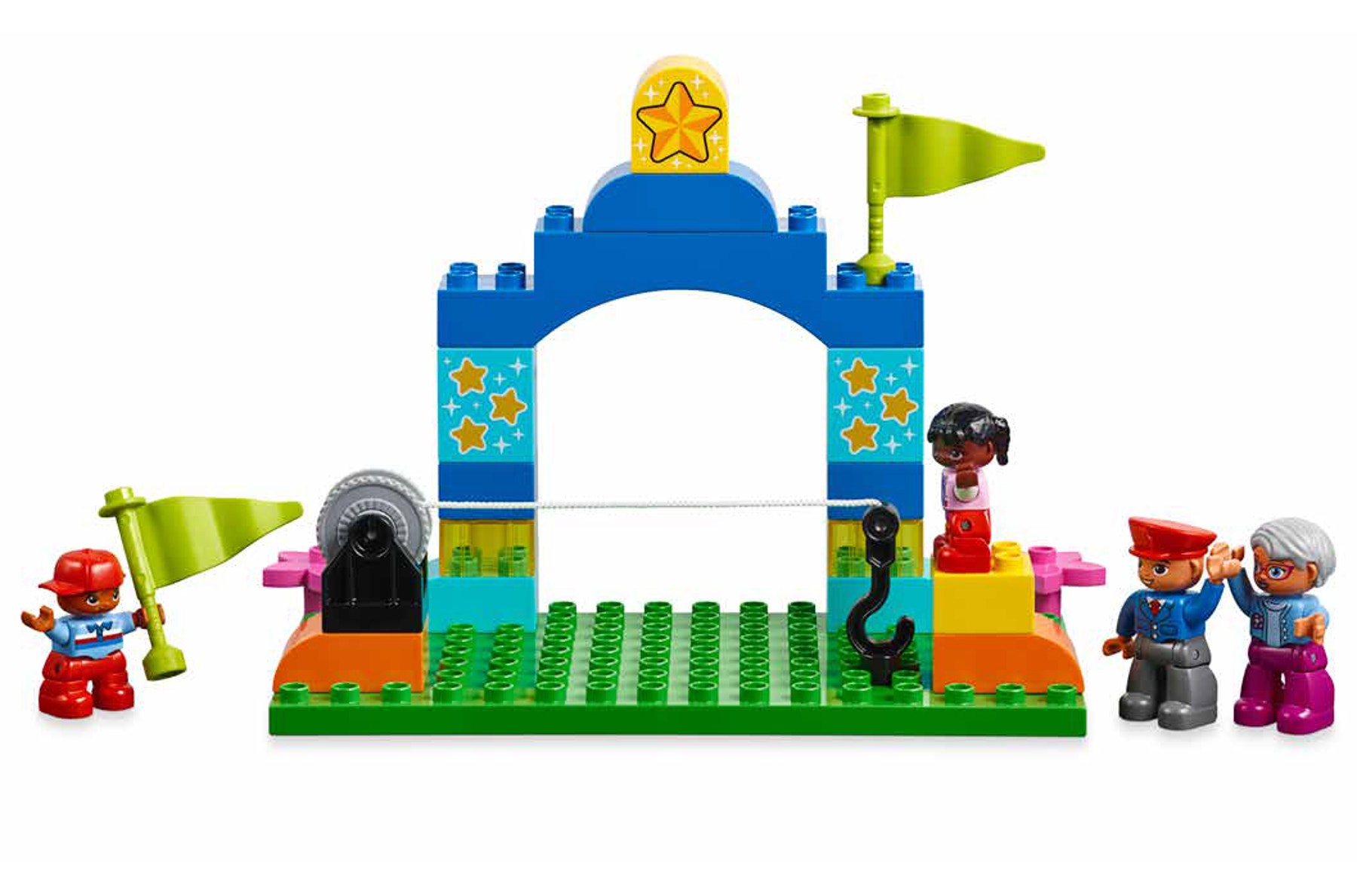Performing Arts
In this lesson, children will learn about different forms of art, and they will create and role-play a show.

Connect
Ask the children if they have seen a performance, such as a puppet show, concert, or gymnastic show, then ask if they have ever performed in a dance recital, play, or concert.
Discuss where these types of performances take place and ask the children to describe what they know about these places.
Talk about different kinds of music and dance that come from different parts of the world (e.g., the Dragon Dance is a traditional Chinese dance that is often performed during Chinese New Year celebrations).
Tell the children that you are going to read the beginning of a story about a group of people who are preparing STEAM Park for its daily visitors. You can show them the inspiration photo or use the figures to act out the scene.

Read the following story aloud:
Parker, the park manager, wants to create a new show for visitors to enjoy. He asks his neighbor, Ms. Engels and her grandson Arty and Arty’s friends – Sienna, Matt, and Teresa to help.
“Hello everyone, I need your help. Not very many people come to watch the show anymore. I want to create something very entertaining that’ll attract a lot of visitors,” Parker said.
“We could each use our special talents to create a variety show that would interest all of the visitors,” Arty said.
“What’s a variety show?” Matt asked.
“A variety show is a show that has a lot of different acts. For example, one act could include a song and dance, and another act could include some magic tricks,” Arty explained.
“I want to perform an animal trainer act! My cat can do a lot of tricks!” Sienna said.
“I’ll balance on a tightrope!” Teresa said.
“My uncle from Mexico showed me a video of a traditional mariachi song, and I’ll perform it in the show,” Matt said.
“This will be the best show ever!” Parker said.
Construct
Ask the children to build a stage or a set for a performance.
Consider asking questions like:
- What do your performers need in order to do their acts?
- What does your audience need in order to watch the show?
Contemplate
Ask the children to use the figures to act out a performance and have them take turns watching each other’s shows.
Tell the children there are different ways to respond to a performance and discuss the appropriate ways to respond.
Continue
Inspire the children with examples of different types of costumes, props, dance, music, and visual art from around the world. Explain that these were created by people belonging to different cultures in other parts of the world.
Give the children craft materials and have them create backgrounds for the show and costumes for the characters (e.g., masks with feathers and glitter). Add music and lights and ask children to perform the shows again.
You can also have the children draw pictures or discuss the different shows they have watched during this lesson or outside of the classroom.
Did you notice?
Observing the following skills can help you monitor whether the children are developing the necessary competencies in science, technology, engineering, art, and math.
- Pretending that the figures are performing an art, such as dance, music, or drama
- Creating two- and three-dimensional art that expresses their ideas
- Responding to the art of others
교사 지원
Children will:
- Learn about different kinds of performances
- Create their own act for a show
- Present or role-play their act
Craft materials (e.g., construction paper, feathers, glitter, glue)
Children are able to:
- Pretend that the figures are performing an art, such as dance, music, or drama
- Create two- and three-dimensional art that expresses their ideas
- Respond to the art of others




